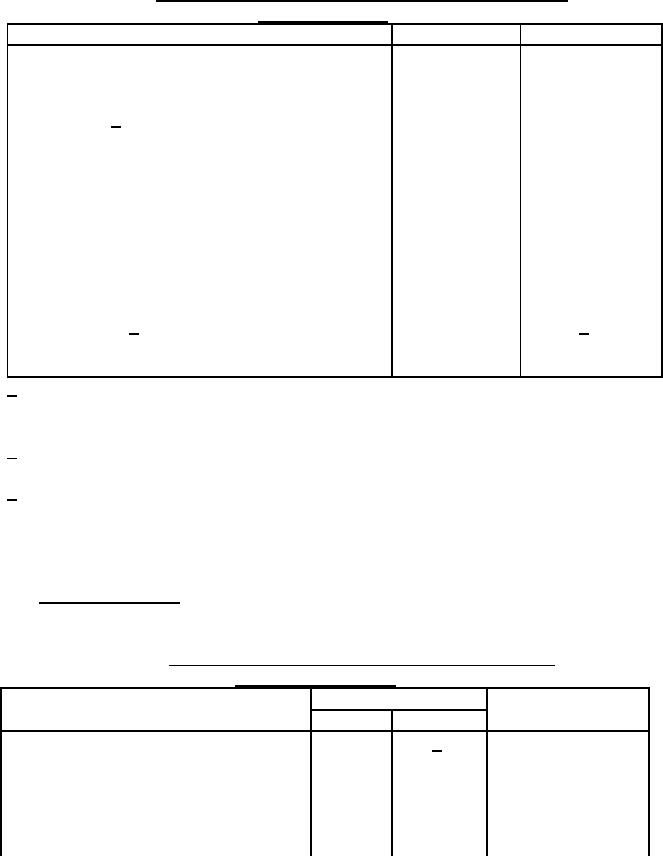
MIL-DTL-46162E
TABLE I. Physical and chemical requirements and test methods for
type I referee fuel Continued.
Property
Value
ASTM
End point, max.
385
Residue volume %, max.
3
Carbon residue on 10% bottoms, % wt, max.
0.20
D524
Sulfur, % wt 1/
0.95 to 1.05
D1552, D129,
or D2622
Copper strip corrosion, 3 hours @ 50°C, max.
1
D130
Ash, % wt, max.
0.02
D482
Accelerated stability, total insolubles,
1.5
D2274
mg/100 mL, max.
Neutralization No., TAN, max.
0.2
D974
Aromatics, volume %
Record
D1319
Net heat of combustion, MJ/kg
Record
D240
Particulate contamination, mg/L, max.
10
D6217
Cetane number 2/
37 to 43
D613 3/, D976,
or D4737
Free water & particulate contamination
Pass
D4176
1/ Naturally-occurring sulfur is preferred. If additional sulfur is required, supplementation
shall only be achieved by blending sufficient amounts of ditertiary butyl disulfide to the
finished fuel.
2/ See appendix A. If the fuel contains cetane improver additives, this limit shall apply
only to the base fuel prior to addition of cetane improver.
3/ ASTM D613 is the referee method for determining cetane quality. ASTM D976 and
ASTM D4737 are permitted as alternates. If cetane improvers (as determined by the
method in appendix A) or non-naturally-occurring sulfur compounds have been
utilized, only ASTM D613 shall be permitted.
3.3.2 Type II referee fuel. The finished type II referee fuel which meets the min
requirements of MIL-DTL-83133, shall conform to the requirements specified in table II.
TABLE II. Physical and chemical requirements and test methods
for type II referee fuel.
ASTM Test
Requirements
Methods
Property
Min
Max
Color, saybolt
1/
D156
Total acid number, mg KOH/gm
0.015
D3242
Aromatics, vol percent
25.0
D1319
Olefins, vol percent
5.0
D1319
Sulfur, total, wt. percent
0.30
D1266, D2622
D3120, D4294
9
For Parts Inquires call Parts Hangar, Inc (727) 493-0744
© Copyright 2015 Integrated Publishing, Inc.
A Service Disabled Veteran Owned Small Business